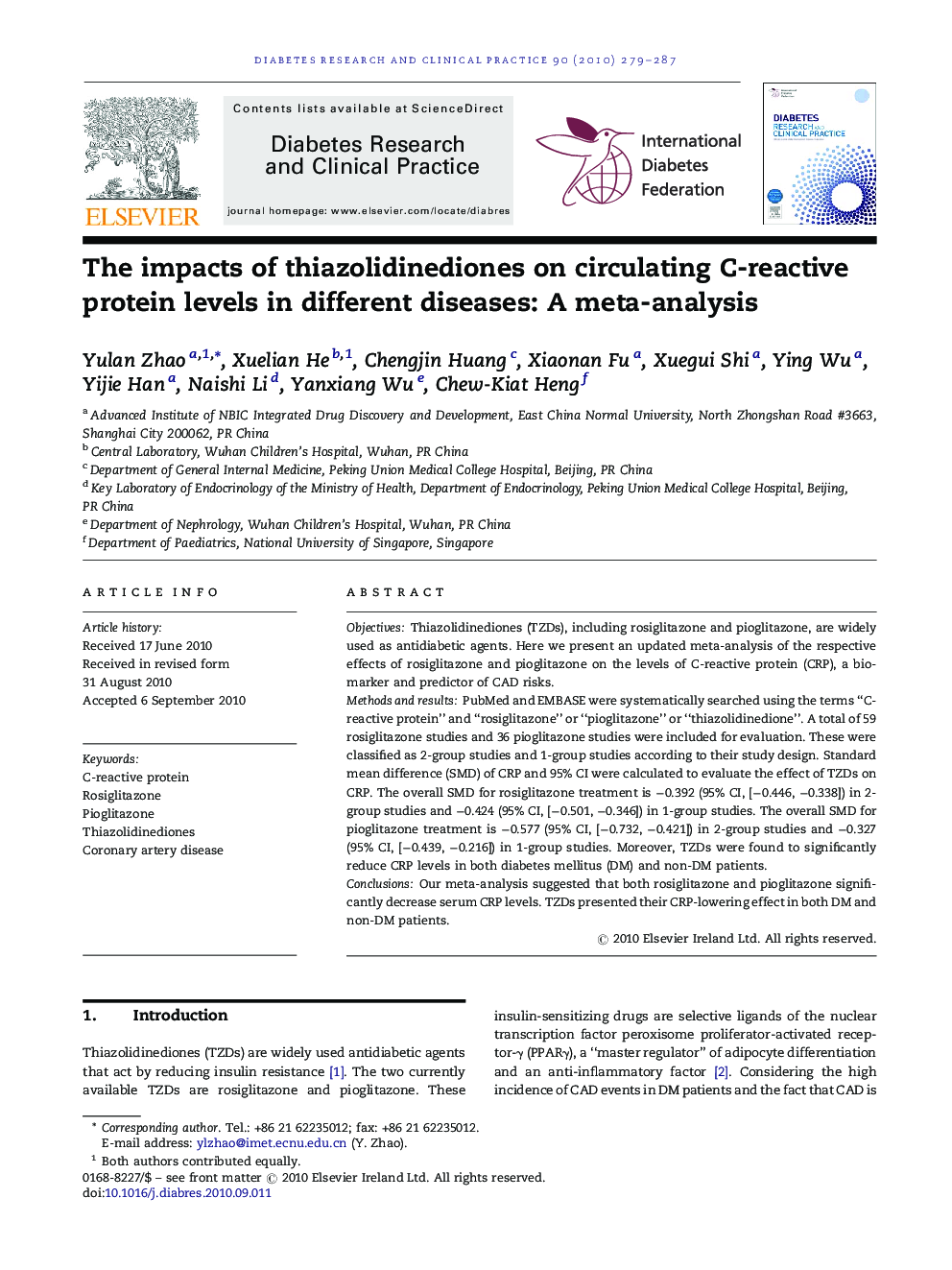| Article ID | Journal | Published Year | Pages | File Type |
|---|---|---|---|---|
| 2797381 | Diabetes Research and Clinical Practice | 2010 | 9 Pages |
ObjectivesThiazolidinediones (TZDs), including rosiglitazone and pioglitazone, are widely used as antidiabetic agents. Here we present an updated meta-analysis of the respective effects of rosiglitazone and pioglitazone on the levels of C-reactive protein (CRP), a biomarker and predictor of CAD risks.Methods and resultsPubMed and EMBASE were systematically searched using the terms “C-reactive protein” and “rosiglitazone” or “pioglitazone” or “thiazolidinedione”. A total of 59 rosiglitazone studies and 36 pioglitazone studies were included for evaluation. These were classified as 2-group studies and 1-group studies according to their study design. Standard mean difference (SMD) of CRP and 95% CI were calculated to evaluate the effect of TZDs on CRP. The overall SMD for rosiglitazone treatment is −0.392 (95% CI, [−0.446, −0.338]) in 2-group studies and −0.424 (95% CI, [−0.501, −0.346]) in 1-group studies. The overall SMD for pioglitazone treatment is −0.577 (95% CI, [−0.732, −0.421]) in 2-group studies and −0.327 (95% CI, [−0.439, −0.216]) in 1-group studies. Moreover, TZDs were found to significantly reduce CRP levels in both diabetes mellitus (DM) and non-DM patients.ConclusionsOur meta-analysis suggested that both rosiglitazone and pioglitazone significantly decrease serum CRP levels. TZDs presented their CRP-lowering effect in both DM and non-DM patients.
